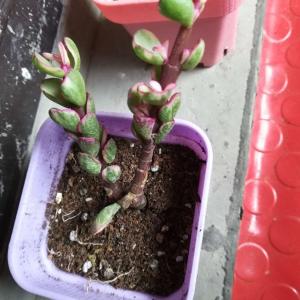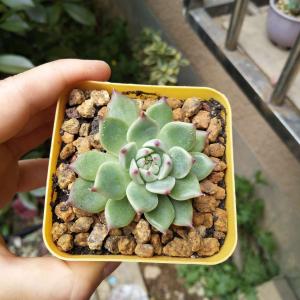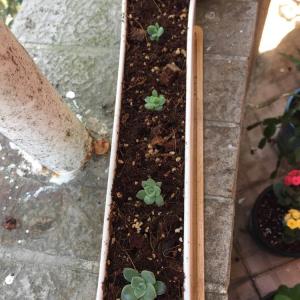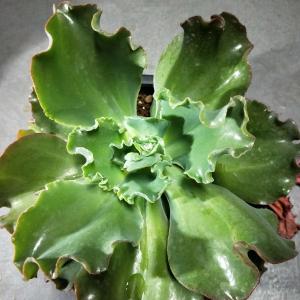成长记
五海
2018年04月10日

早起给屁屁们浇了水,初冬以来第一次浇透,之前都是对角勾水。来不及拍照借了2周前的
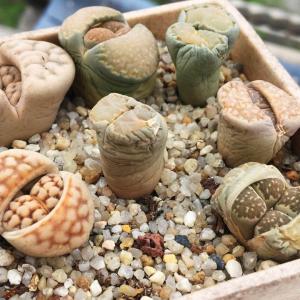

0
0
sunnyzou:我怎么觉得麻麻的感觉的 !还挺不喜欢这开裂的过程的🤣
简单爱:要长新屁屁啦!肥嘟嘟,可爱
文章
Miss Chen
2018年04月09日

The spicy flavor of a fresh radish is most pronounced immediately after harvest. Proper storage helps retain the flavor and quality of any radishes you can't use right away. Harvest radishes when the roots are about 1 1/2 inches in diameter. Smaller roots haven't developed their full flavor and larger roots become tough and woody. Prepare and store the radishes immediately after pulling so the roots don't begin to decline or lose their signature flavor.

Step 1
Cut the tops off the radish with a sharp, clean knife. Leave 1/2 inch of the stem attached to the top of the bulb.
Step 2
Place the radishes in a perforated plastic storage bag. A perforated bag allows air circulation while retaining moisture during storage. Store in an open plastic bag if you don't have perforated bags.
Step 3
Store the bagged radishes in the vegetable crisper drawer of the refrigerator. Store the radishes for up to a month in the refrigerator.

Step 4
Inspect the radishes once weekly. Use them immediately if they begin to discolor or develop soft spots.

Step 1
Cut the tops off the radish with a sharp, clean knife. Leave 1/2 inch of the stem attached to the top of the bulb.
Step 2
Place the radishes in a perforated plastic storage bag. A perforated bag allows air circulation while retaining moisture during storage. Store in an open plastic bag if you don't have perforated bags.
Step 3
Store the bagged radishes in the vegetable crisper drawer of the refrigerator. Store the radishes for up to a month in the refrigerator.

Step 4
Inspect the radishes once weekly. Use them immediately if they begin to discolor or develop soft spots.
0
0
文章
Miss Chen
2018年04月08日

Daikon radishes have long, fleshy taproots that are used for a variety of purposes. Daikon radishes are generally 2 to 4 inches in diameter and 6 to 20 inches long. The three distinct shapes are spherical, oblong and cylindrical. The uses for Daikon radishes are as varied as the shapes, colors and sizes they come in.

Origins of Daikon Radishes
Also called oilseed radish, Daikon radishes (Raphanus sativus var. oleiferus) comes from two Japanese words: "dia" (meaning large) and "kon" (meaning root). Thought to have originated in the Mediterranian, Daikon radishes were brought to China around 500 B.C. and are still a staple in food dishes across Asia. Most Daikon radishes are white, but they can be yellow, green or black.
Uses for Cover Cropping
Daikon radishes are grown worldwide for cover cropping and food production. Cover cropping is using the natural properties of one or more plant species to help soil, reduce weeds and increase nutrient content for the benefit of the primary crop. Daikon radishes have been found to penetrate tough soils, absorb large amounts of nitrogen and provide a large above-ground foliage cover to suppress weeds. Daikon radishes germinate quickly, grow in cooler temperatures and are often planted in the fall. Left in the ground over winter to decompose, they then release the nitrogen back into the soil for next season's crop.

Culinary Uses
Daikon radishes are the most widely grown vegetable in Japan. Daikon can be eaten raw, fried, grilled or boiled. When eaten raw, Daikon radishes are spicy. They become mild when processed. Daikon radishes are a good source of vitamin C, phosphorus and potassium. Daikon radishes are also low in calories (only about 18 calories per 100g) and are rich in enzymes to help aid in digestion.
When to Harvest
When used as a food crop, Daikon radishes can be harvested approximately 60 days after planting. If used for processing, roots should be allowed to grow to 12 to 14 inches. For fresh market sales, harvest roots at 2 1/2 inches. Tops break off easily during harvesting, so radishes should be harvested by hand. Use a digging fork to gently lift and loosen the soil around the radishes, then gently pull on the tops as close to the ground as possible. If you plant several crops in a row, you can harvest Daikon radishes for several weeks.

Origins of Daikon Radishes
Also called oilseed radish, Daikon radishes (Raphanus sativus var. oleiferus) comes from two Japanese words: "dia" (meaning large) and "kon" (meaning root). Thought to have originated in the Mediterranian, Daikon radishes were brought to China around 500 B.C. and are still a staple in food dishes across Asia. Most Daikon radishes are white, but they can be yellow, green or black.
Uses for Cover Cropping
Daikon radishes are grown worldwide for cover cropping and food production. Cover cropping is using the natural properties of one or more plant species to help soil, reduce weeds and increase nutrient content for the benefit of the primary crop. Daikon radishes have been found to penetrate tough soils, absorb large amounts of nitrogen and provide a large above-ground foliage cover to suppress weeds. Daikon radishes germinate quickly, grow in cooler temperatures and are often planted in the fall. Left in the ground over winter to decompose, they then release the nitrogen back into the soil for next season's crop.

Culinary Uses
Daikon radishes are the most widely grown vegetable in Japan. Daikon can be eaten raw, fried, grilled or boiled. When eaten raw, Daikon radishes are spicy. They become mild when processed. Daikon radishes are a good source of vitamin C, phosphorus and potassium. Daikon radishes are also low in calories (only about 18 calories per 100g) and are rich in enzymes to help aid in digestion.
When to Harvest
When used as a food crop, Daikon radishes can be harvested approximately 60 days after planting. If used for processing, roots should be allowed to grow to 12 to 14 inches. For fresh market sales, harvest roots at 2 1/2 inches. Tops break off easily during harvesting, so radishes should be harvested by hand. Use a digging fork to gently lift and loosen the soil around the radishes, then gently pull on the tops as close to the ground as possible. If you plant several crops in a row, you can harvest Daikon radishes for several weeks.
0
1




